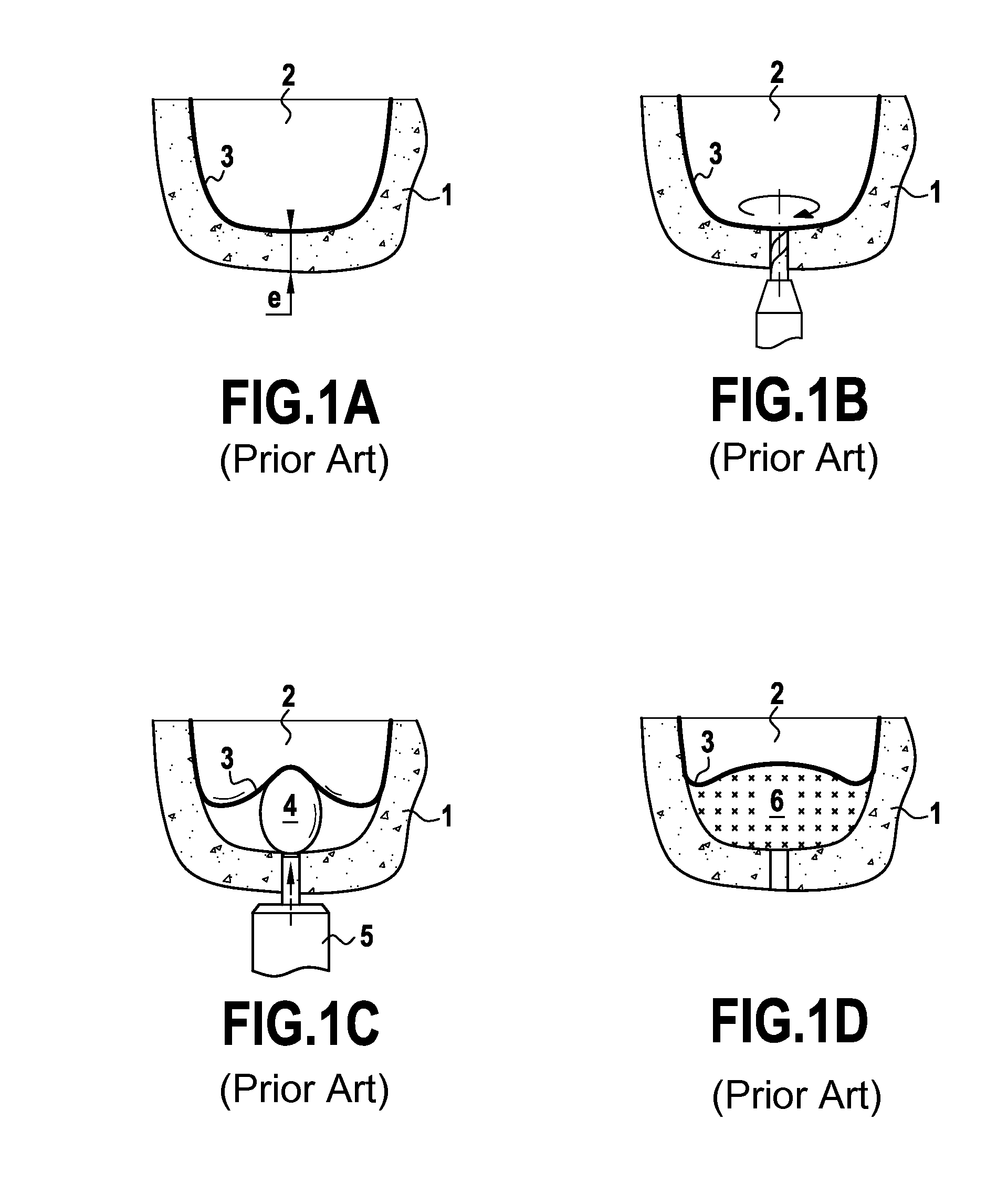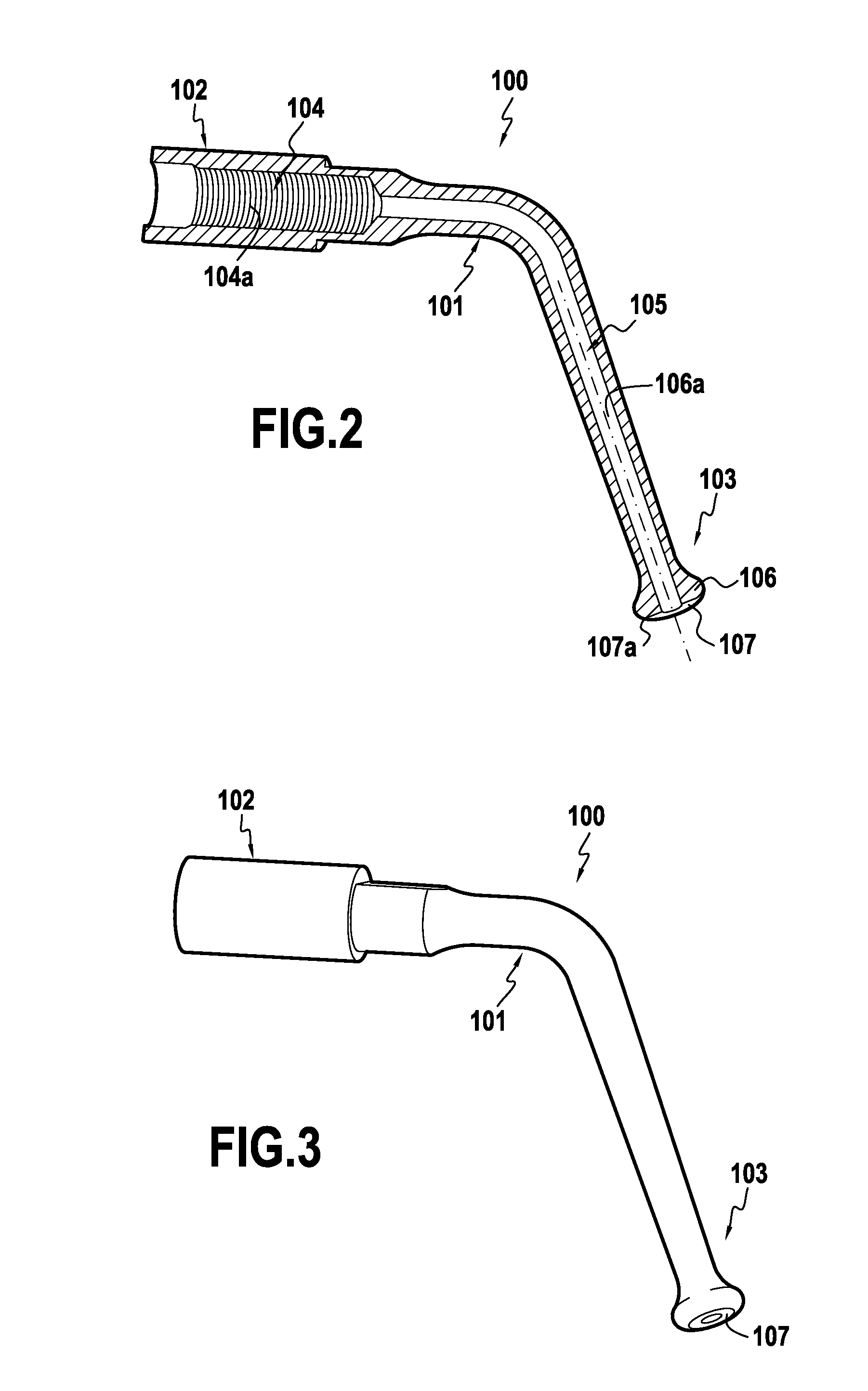Ultrasonic tip for sinus membrane elevation
a technology of ultrasonic tip and sinus membrane, which is applied in the field of ultrasonic tip for sinus membrane elevation, can solve the problems of reducing the safety reducing not always having a sufficient thickness or volume of cortical bone for the stable elevation of the maxilla, etc., so as to reduce the risk of tearing the membrane, reduce the risk of tearing the latter, and ensure the effect of lifting the sinus membran
- Summary
- Abstract
- Description
- Claims
- Application Information
AI Technical Summary
Benefits of technology
Problems solved by technology
Method used
Image
Examples
Embodiment Construction
[0025]FIGS. 2 and 3 show an ultrasound tip 100 used to lift the sinus membrane according to an embodiment of the present invention.
[0026]Ultrasound tip 100 is formed of a body 101, for example in a metallic material, extending between a proximal part 102 intended to be mechanically coupled to a surgical handpiece generating vibrations as explained below and a distal part 103 intended to reproduce the vibrations transmitted by the handpiece. The proximal part 102, extending along a longitudinal axis (101a), comprises a cavity 104, the walls of which are threaded 104a to allow the tip to be attached to the handpiece. The cavity 104 continues in an internal irrigation channel 105 which extends inside body 101 for all its length and emerges at the end of the distal part 103.
[0027]The distal part 103 of tip 100 extends along a longitudinal axis 101b. The distal parts 103 corresponds to the part of the tip which is introduced into the mouth of the patient for reaching the hole drilled in ...
PUM
 Login to View More
Login to View More Abstract
Description
Claims
Application Information
 Login to View More
Login to View More - R&D
- Intellectual Property
- Life Sciences
- Materials
- Tech Scout
- Unparalleled Data Quality
- Higher Quality Content
- 60% Fewer Hallucinations
Browse by: Latest US Patents, China's latest patents, Technical Efficacy Thesaurus, Application Domain, Technology Topic, Popular Technical Reports.
© 2025 PatSnap. All rights reserved.Legal|Privacy policy|Modern Slavery Act Transparency Statement|Sitemap|About US| Contact US: help@patsnap.com



